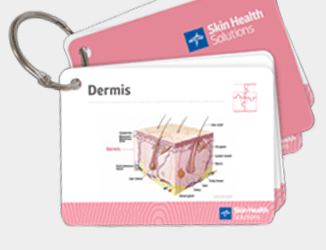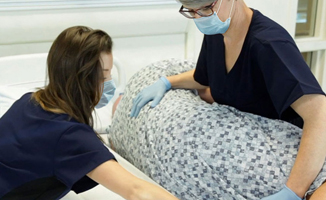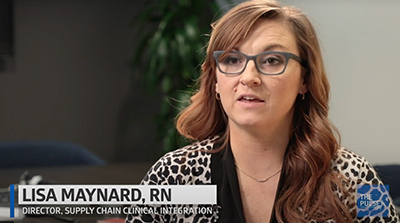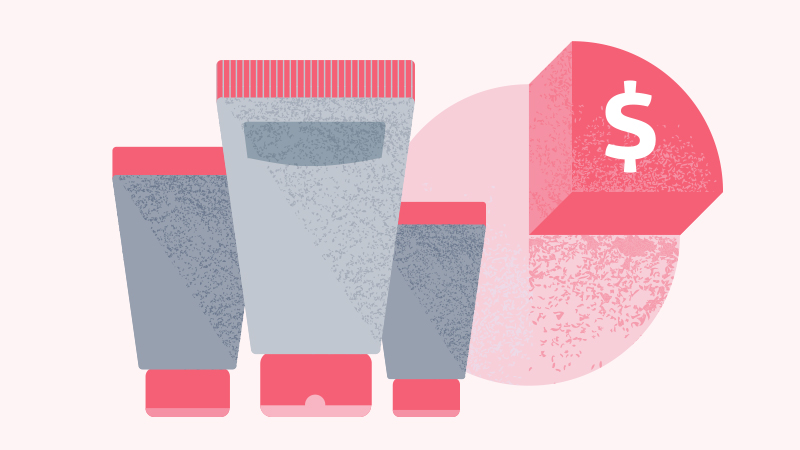Align your team to improve patient care standards
Why standardization and teamwork are key to better outcomes.

Do you notice differences in care between departments at your facility and even within the same unit? If your answer is yes, you’re not alone.
When it comes to reducing care variation and achieving patient care standards, there are multiple challenges you need to overcome: frequent staff turnover that prevents consistency, limited time to focus on strategy, siloed roles and responsibilities, and lack of leadership support.
But when you consider the benefits of standardization, you’ll see your efforts pay off.
Reducing variations in care can help make it easier to improve patient outcomes. Advantages include:
- Less guesswork among caregivers
- More time for personal interaction with patients
- Better documentation across the care continuum
- Reduced product waste
- Stronger quality initiative programs
- More reliable results
“I try to always bring the standardization discussion back to patient care,” says Patricia Turner BSN, RN, CWOCN, CWS, Medline Director of Clinical Resources Skin Health. Read on to learn how you can help drive consistent care and improve patient outcomes.
Know the 3 keys to consistent care
Standardizing patient skin health involves three key components: evidence-based best practices, education and training, and the right system of products.
It’s like three legs of a stool, each relying on the other to create a solid foundation for optimal skin health. When there are negative outcomes, such as healthcare-associated pressure injuries, systemwide standards make it easier to determine which of the three areas may need fine-tuning.
So, how do you start to standardize skin and wound care?
Here are some steps to take:
- Consider working with a vendor partner who’s willing to listen and can help define your strategy
- Identify your goals for standardization in each of the key areas
- Build stakeholder support within each unit and from facility leadership
- Develop education and training that supports your standardization goals
- Assess product selection to ensure standardization reaches every caregiver and patient
Match guidelines with protocols
Knowing industry best practices helps empower caregivers to properly prevent and treat wounds. But if there’s a mismatch between knowledge and practice, it can lead to poor outcomes.
“I try to always bring the standardization discussion back to patient care.”

Patricia Turner
BSN, RN, CWOCN, CWS, Medline Director of Clinical Resources Skin Health
At Manatee Memorial Hospital in Florida, Medline Skin Health specialist Phillip Meyers, RN, CWS, conducted a comprehensive Skin Health Discovery Assessment to help address gaps in care. One aspect of standardization that jumped out related to the use of the Braden Scale.
“The nurses were using the Braden Scale for skin assessment,” Meyers says. “But the result didn’t come with an action. In other words, what do you do if it’s a low number? The patient skin will break down if nothing is done.”

As a solution, Meyers collaborated with the Manatee staff to create a poster that clearly depicted the best practices if a patient has a Braden score of 18 or below. “It was a poster that showed the action and the products to use that all have an impact on preventing pressure injuries,” Meyers explains.
Assess your product utilization
Many standardization wins are a result of product selection. That’s why a thorough review of your storeroom products and organization can help you reach your goal of following consistent skin and wound care practices.
“There’s that perpetual fear that you have to have everything and anything,” says Nicholas Risher, Medline Executive Account Director. “But what do you truly need to drive the outcomes you’re looking for?”
“Variations in product equals variations in care.”
Patricia Turner
During his product assessments, Risher has seen facilities who don’t know why they have both a 4 by 4 dressing and a 3-1/2 by 3-1/2 dressing. “We try to eliminate this variation and eliminate the guesswork by determining what they need based on best practice guidance,” he explains.
“Variations in product equals variations in care,” says Turner. She encourages facilities to look at product standardization from both a financial and a clinical perspective.
“When people think about reducing care variation, the immediate connection is often to cost containment, but on the clinical side, it’s assuring that every patient has access to the same standard and level of treatment,” she stresses.
For instance, if you have three different barrier creams and one is effective, but the other two aren’t quite as effective, Turner wonders, “If I’m an incontinent patient, do I just get the luck of the draw?”
“Standardization is assuring that every patient has access to the same standard and level of treatment.”
Patricia Turner
“Standardizing and streamlining product selection make it easier for staff to know what to use,” Turner says. “It takes away some potential subjectivity, allowing every caregiver to deliver the same level of care to all of their patients.”
Another way to use products to help standardize care is with a system of products that has clear and simple labeling. For instance, color-coded skin care products quickly convey to caregivers the purpose of the product. “Purple for prevention, for example,” Turner suggests.
Build staff confidence with just-in-time education
Education doesn’t have to be formal to help standardize care. Manatee Memorial creates laminated cards that are hung right in front of a product to indicate their typical usage. “We call those shelf talkers, and they quickly grab the caregiver’s attention,” Meyers says.
Meyers also worked with the team at Manatee to help create “badge buddies” that included basic best practices. Caregivers could wear them on lanyards to reference at the bedside.

Badge buddies help support best practices at the bedside
Other simple educational opportunities may come from the product itself. Whether it’s a visual how-to on the package or a quick instructional video, pairing the right products with the right application helps ensure consistent application.
Key takeaway
Reducing variations in skin and wound care takes a comprehensive approach, including the right protocols, education and product selection. Working with a clinical partner can help uncover your specific challenges and determine opportunities to build care consistency in all these areas. Successful patient care standards help improve outcomes and empower caregivers to make skin health second nature.





